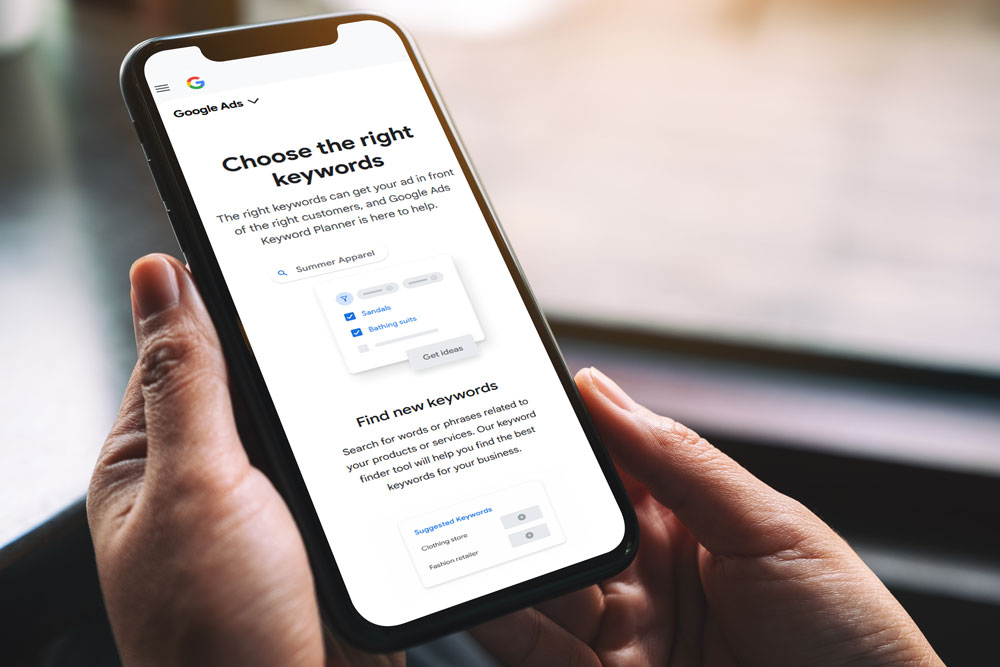Running a Google Ads campaign without the right keywords is a bit like putting up a billboard in the middle of a desert. People might see it, but they’re not the people looking for what you offer. Choosing the right keywords is the foundation of any successful PPC campaign — and it’s where many businesses go wrong.
In this post, we’ll break down a simple step-by-step process to help you find keywords that are relevant, targeted, and cost-effective.
Step 1: Think Like Your Customers
Before opening any keyword tool, take a step back and think about the words your customers would type into Google when searching for your product or service.
- What problem are they trying to solve?
- What language would they use (not industry jargon)?
- Are they looking to buy, or just researching?
👉 For example, if you sell handmade wooden tables, a customer might search “buy solid wood dining table” rather than “bespoke carpentry solutions.”

Step 2: Use Google’s Keyword Planner

Google Keyword Planner (inside Google Ads) is a free tool that helps you:
- Discover new keyword ideas
- See average monthly searches
- Check competition levels
- Estimate the cost per click (CPC)
Start by entering a few of your initial ideas and let the tool generate related terms. You’ll usually uncover phrases you hadn’t thought of.
Step 3: Focus on Intent
Not all keywords are created equal. Some people are just browsing, while others are ready to buy.
- Informational keywords: “what is PPC advertising” → good for blog content.
- Commercial keywords: “best PPC training course” → people are comparing options.
- Transactional keywords: “buy Google Ads training UK” → ready to purchase.
👉 For PPC, transactional and commercial keywords are usually more valuable.
Step 4: Choose the Right Match Types

Google Ads lets you control how closely a search must match your chosen keyword:
- Broad Match – shows ads for loosely related terms (risk: wasted spend).
- Phrase Match – shows ads for searches containing your phrase in order.
- Exact Match – shows ads only for that exact term or close variations.
👉 A smart strategy is to start with Phrase and Exact Match to keep control, then test Broad Match later with caution.
Step 5: Use Negative Keywords
Negative keywords stop your ads from showing for irrelevant searches.
Example: If you sell “luxury watches,” you’d add cheap and free as negative keywords. This prevents you paying for clicks from people who will never buy.
Regularly review your search terms report in Google Ads and add irrelevant terms as negatives.
Step 6: Review, Refine, Repeat
Keyword research isn’t “set and forget.” Monitor your campaigns weekly:
- Which keywords drive clicks but no conversions? Pause them.
- Which ones convert well? Increase bids or budgets.
- Are new search trends appearing? Add them in.

Final Thoughts
Choosing the right keywords is one of the most powerful ways to stop wasting money in Google Ads. Focus on intent, use the right match types, and keep refining your list.
👉 And if you’d like step-by-step guidance that’s tailored to your business, our Bespoke PPC Training is designed to help you cut waste, boost ROI, and confidently manage your own campaigns.
